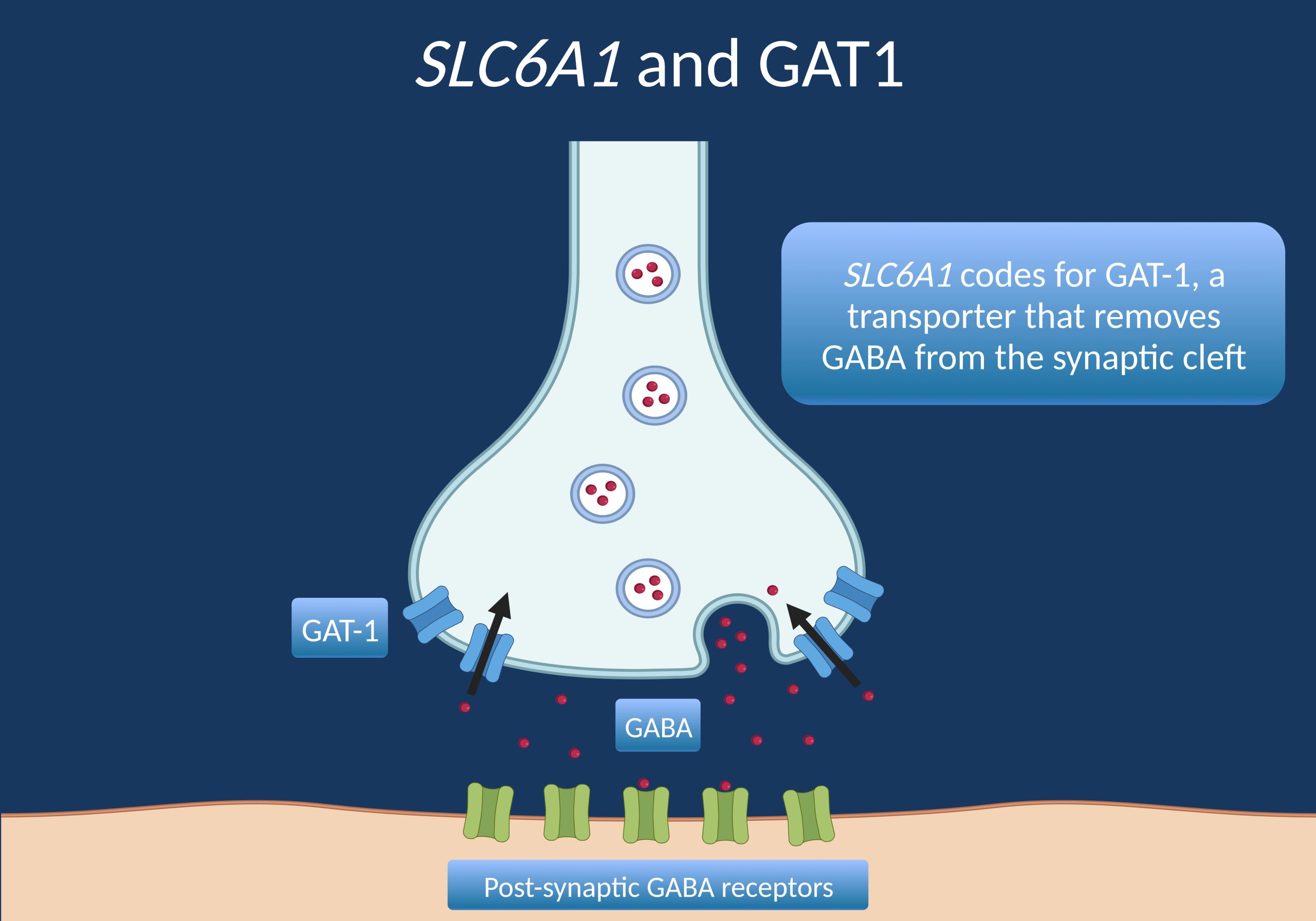GAT1. The SLC6A1 gene remains one of the most common genetic etiologies to be associated with genetic generalized epilepsy and myoclonic atonic epilepsy. SLC6A1 has not received an update on our blog in a while, perhaps because unlike many other genes we see, this one has remained with a somewhat consistent clinical picture, albeit with much more detail and confidence than available back when the first papers were published in 2015-2018. Here are the five things to know about SLC6A1 in 2023.

Figure 1. Diagram of the synaptic cleft where GAT-1, the transporter protein made by the SLC6A1 gene, reuptakes GABA into the pre-synaptic neuron.
1 – Seizures. SLC6A1 remains one of the most common genetic causes of myoclonic atonic epilepsy (MAE), also known as Doose syndrome. However, other seizure types can present as well, including absence and focal seizures. About 80-90% of individuals diagnosed with an SLC6A1-related disorder will have seizures (Goodspeed et al., 2020; Kahen et al., 2021).
2- Cognition. Developmental delays/intellectual disability are present in nearly all individuals with SLC6A1-related disorders, though typically in the mild to moderate range. Unaffected individuals and profoundly affected individuals are uncommon. Autistic traits are also common – present in about a quarter of individuals with an SLC6A1-related disorder.
3 – Inheritance. Despite the prevalence of cognitive impairment in SLC6A1-related disorders, causative variants have been observed to be inherited in nearly 20% of cases (Goodspeed et al., 2020). Careful history-taking is important in the workup of families with affected children to assess for the possibility of mildly affected parents.
4 – Mechanism. SLC6A1 codes for GAT-1, a GABA transporter that removes GABA from the synaptic cleft. It is unknown how loss of GAT-1 leads to seizures.
5 – Support. SLC6A1 Connect is a very active family foundation founded in 2018 that has grown very quickly. They have undertaken significant research efforts and host annual conferences, and they have been particularly active in pushing for new treatments and targeted therapies. SLC6A1 Connect is another prime example of advocacy groups driving progress forward.
Here is what you need to know. SLC6A1 remains a common cause of myoclonic-astatic epilepsy (MAE), also known as Doose syndrome. The phenotype is relatively well-circumscribed compared to other epilepsy genes, primarily involving mild to moderate cognitive impairment and myoclonic, atonic, and absence seizures. While the basic mechanism is known to be loss of function of the GAT-1 GABA transporter, the specific way that that this causes epilepsy is still is yet to be understood.

